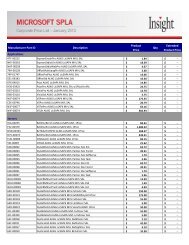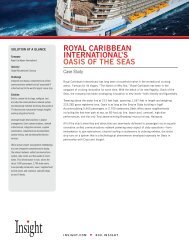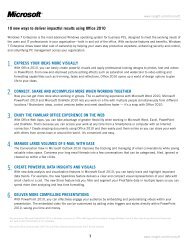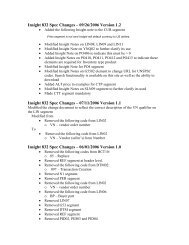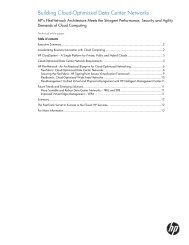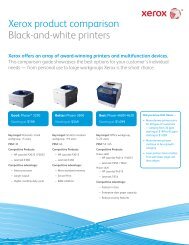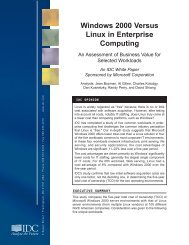EMC Guarantees 20% Capacity Advantage for its Celerra Unified ...
EMC Guarantees 20% Capacity Advantage for its Celerra Unified ...
EMC Guarantees 20% Capacity Advantage for its Celerra Unified ...
You also want an ePaper? Increase the reach of your titles
YUMPU automatically turns print PDFs into web optimized ePapers that Google loves.
Company Brief: <strong>EMC</strong> <strong>Guarantees</strong> <strong>20%</strong> <strong>Capacity</strong> <strong>Advantage</strong> <strong>for</strong> <strong>its</strong> <strong>Unified</strong> Storage Systems 2<br />
User and Market Relevance<br />
The market relevance of using <strong>20%</strong> less capacity is extremely easy to determine and it goes to the heart of the efficiency<br />
need highlighted in the introduction to this paper. While using <strong>20%</strong> less capacity is inherently good (as long as<br />
effectiveness is at least maintained) and while it would mean less equipment has to be bought (an obviously good thing<br />
<strong>for</strong> users), it is also a means to an end. That end is to reduce IT operational expenditures. Specifically, <strong>20%</strong> less disk<br />
capacity means less power consumption, less cooling needed, less floor space required, less maintenance, and even<br />
potentially less management overhead; in other words, less operational expense to get the same work done. And that<br />
matters a lot: as ESG’s latest 2010 Spending Intentions survey data in Figure 1 shows, OPEX reduction is the current<br />
number one consideration in justifying IT investments, ahead of even CAPEX reduction. 1<br />
Figure 1. OPEX Reduction Remains the Top Consideration in Justifying IT Investment <strong>for</strong> 2010-11<br />
Which of the following considerations do you believe will be most important in<br />
justifying IT investments to your organization’s business management team over the<br />
next 12-18 months? (Percent of respondents, three responses accepted)<br />
Reduction in operational costs<br />
Business process improvement<br />
Reduction in capital costs<br />
Improved security / risk management<br />
Return on investment / speed of<br />
payback<br />
Improved regulatory compliance<br />
Reduced time to market <strong>for</strong> our<br />
products or services<br />
10%<br />
<strong>20%</strong><br />
23%<br />
32%<br />
36%<br />
31%<br />
33%<br />
Source: Enterprise Strategy Group, 2010.<br />
There are other insights as to why using <strong>20%</strong> less capacity is not only inherently good, but also particularly relevant:<br />
When asked about their greatest challenge with respect to their storage environments, users’ responses<br />
were surprisingly basic, even arcane: the top challenges were not things like the growth of unstructured<br />
data, per<strong>for</strong>mance, or e-discovery—all these were important and made the list—the number one challenge<br />
was “storage system costs,” number two was “keeping pace with overall data growth,” and number four<br />
was “running out of physical space.”<br />
Responding to a question about areas <strong>for</strong> the most significant data storage investments in 2010-11,<br />
respondents had “more SAN implementations” at number one, followed by “data replication <strong>for</strong> offsite DR”<br />
and “storage virtualization” (probably no huge surprises and good <strong>for</strong> <strong>EMC</strong> in any case); however “more<br />
power efficient storage hardware” was a strong number four on the long list of responses and was ahead of<br />
such things as data reduction technologies, tiering, and improved storage management tools.<br />
Clearly, using <strong>20%</strong> less unified storage capacity is an extremely relevant proposition <strong>for</strong> <strong>EMC</strong> to bring to the marketplace.<br />
1<br />
Source: ESG Research Report, 2010 IT Spending Intentions Survey, January 2010. All statistics come from this report unless otherwise cited.<br />
© 2010 Enterprise Strategy Group, Inc. All Rights Reserved.<br />
17%<br />
30%<br />
37%<br />
42%<br />
37%<br />
54%<br />
62%<br />
0% 10% <strong>20%</strong> 30% 40% 50% 60% 70%<br />
2009<br />
(N=492)<br />
2010<br />
(N=515)




